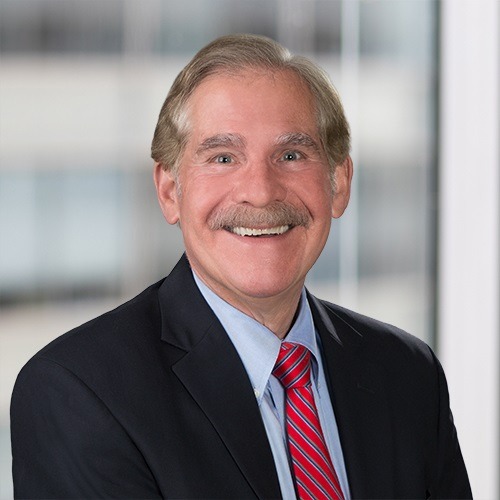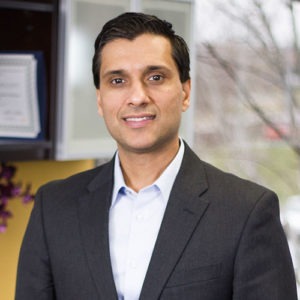Medical marijuana: Hashing out the legal issues
[Editor's note: This is part one of a two-part article. Read part two here: Is senior care going to pot?]
Medical marijuana is here to stay and will almost certainly enjoy increasing legal protections and growing acceptance in the medical/scientific communities. More than half of Americans live in jurisdictions where medical marijuana is legal in some form.
Twenty-five states and the District of Columbia have already legalized medical marijuana and more than a dozen other states have related pending legislation. However, while half of the country’s states have passed laws decriminalizing medical marijuana, it is still illegal under federal law. Does that matter? Yes, because federal law trumps state law. Moreover, every nursing home, hospice, home health agency and hospital that participates in the Medicare program must agree to follow all federal laws. So, what’s a provider to do?
According to a study published in the July 2016 issue of Health Affairs journal, the use of prescription drugs, including opioids, fell precipitously in states that legalized medical marijuana. The authors concluded that where medical marijuana replaced prescription medications, the savings to Medicare was $165.2 million in 2013 alone.[i]
People who live in states where medical marijuana is legal may take comfort that they will not likely be prosecuted as long as they comply with state law. This is especially important for nursing homes and hospices that want to allow residents/patients with end-stage cancer, amyotrophic lateral sclerosis (ALS), Parkinson’s Disease and specific other medical conditions to obtain and use medical marijuana.
As demonstrated below, the laws in the 25 states that have legalized medical marijuana are as diverse and inconsistent as the states themselves. It is the goal of this article to help healthcare providers and patients navigate the murky waters and thorny legal issues surrounding this important area.
The conflict is not just between federal and state law; there appears to be an inherent conflict in the relevant federal laws. On one hand, federal regulations mandate respecting residents’ rights, such as the right to have a resident’s needs accommodated. According to 42 C.F.R. § 483.15(e), “A resident has the right to reside and receive services in the facility with reasonable accommodation of individual needs and preferences, except when the health or safety of the individual or other residents would be endangered.” Another applicable federal regulation requires that “A facility must care for its residents in a manner and in an environment that promotes maintenance or enhancement of each resident’s quality of life.” (42 C.F.R. § 483.15). On the other hand, possession or use of medical marijuana is prohibited by federal law (21 U.S.C. § 841), placing nursing homes, hospices and other healthcare providers on the horns of a dilemma.
The evolving science regarding cannabis
Among the more than 60 active ingredients in marijuana are tetrahydrocannabinol (THC) and cannabidiol (CBD). The former has psychoactive properties while the latter does not.
According to a recent study published in The Lancet Neurology, Orrin Devinsky, MD, professor of neurology, neurosurgery, and psychiatry and director of the Comprehensive Epilepsy Center at New York University (NYU) Langone, CBD was effective in reducing seizure frequency among the patients in the study. Devinsky and his team of researchers concluded that CBD was safe for most children and young adults enrolled in a year-long study led by epilepsy specialists at NYU Langone Medical Center.[ii] The researchers’ findings are among the first estimates of safety and efficacy of CBD in children and adults who suffer from severe epilepsy resistant to conventional medication.
Another researcher, Dr. Manuel Guzman, professor of microbiology and biochemistry at Complutense University of Madrid, has been researching the effects of cannabinoids since 1999. According to the only clinical study involving cannabinoids and cancer in humans, Guzman and fellow researchers concluded, “In this study we show that cannabinoids, a new family of potential antitumoral agents, induce autophagy of cancer cells and that this process mediates the cell death–promoting activity of these compounds.”[iii]
“The results from this study show that THC given in this way is safe and doesn’t seem to cause significant side effects,” Guzman wrote. “But because this was an early stage trial, without a control group, it’s impossible to say whether THC helped to extend their lives. And while it’s certainly not a cure, the trial results suggest that cannabinoids are worth pursuing in clinical trials.”
Organizational efforts
Non-profit organizations, such as the Realm of Caring, and trade and lobbying organizations actively promote the use of medical marijuana and encourage favorable legislative efforts. For example, the Realm of Caring seeks to “improve lives through research, education, and advocacy related to cannabis.” Through its research it hopes to learn more about cannabis and its effects while legitimizing its therapeutic use. Additionally, it seeks to empower consumers to select the best products for their individual needs and informs healthcare professionals about options for their patients. According to Nicole Mattison, Outreach Director, “Realm of Caring receives about 2,000 inquires each week.”[iv] Mattison adds, “We are very pleased to have recently launched our IRB [Investigational Review Board]-approved Observational Research Registry in partnership with Johns Hopkins University, in which we currently have over 800 participants.”
Federal approach to medical marijuana
Although medical marijuana remains illegal under federal law, the U.S. Department of Justice (DOJ) has backed-off prosecuting individuals who are in compliance with state law. In August 2013, Deputy Attorney General James Cole issued a memorandum (the “Cole memo”) to all U.S. Attorneys. Essentially, the Cole memo provides for prosecutorial discretion involving medical marijuana by DOJ in states with “robust” laws. But, DOJ will prosecute if marijuana use falls outside of state-approved use.
In the last few years, Congress has weighed into the fray with a number of proposed legislative efforts. For example, the Rohrabacker-Farr Amendment mandates that no funds available under federal appropriations may be used by DOJ to prevent any of the 25 states from authorizing the use, distribution, possession or cultivation of medical marijuana.
Physician Perspectives
According to Dr. Cari Levy, a practicing physician and Vice-President of the American Medical Directors Association–the Society for Post-Acute and Long-Term Care Medicine, “Many of us who have struggled to treat older adults with opioids have wondered if marijuana could serve as an alternative in selected conditions for certain patients, but we know so very little about how to use it, how to dose it, and which strains are best for which conditions. It is uncharted territory and all learning is mired by our fear of being in violation of Federal law. There will come a day when we’re smarter about who might benefit and who we might harm, but at this point we’re living in an unregulated lab.”[v]
The need for additional research into the risks and benefits of medical marijuana is highlighted by Dr. David Nace, Director, University of Pittsburgh Medical Center Senior Communities. Nace notes that, “I think this is a very important topic and as physicians, we would like to see more clinical research in order to have a better understanding of the clinical indications and possible side effects.”[vi]
Diverse state laws
State laws vary widely regarding who may possess medical marijuana, whether a physician can prescribe it and whether nurses or others may administer it. For example, Georgia’s medical marijuana law, Haleigh’s Hope Act, only allows a “registered user” to possess less than 20 fluid ounces of low THC oil in a pharmaceutical grade container with a label stating that it contains less than 5% THC. Nurses may not store or dispense the legal low THC oil. In order to be a registered user, a person must have one of eight medical conditions as certified by their treating physician and also sign a waiver acknowledging that the low THC oil is not FDA approved. Georgia does not allow the growing, distribution or sale of medical marijuana within the state; it only provides for the decriminalization of possession of a “legal amount” by a “registered user.”
However, many states have far more liberal laws. For example, in Colorado, “Primary caregivers are authorized to assist medical marijuana patients in the medical use of marijuana. A primary caregiver must be 18 years or older and have ‘significant responsibility’ for managing the well-being of the patient including being involved in basic or instrumental activities of daily living.” [vii]
Because of the diversity among state-specific law, it is essential that healthcare practitioners become familiar with the laws in their respective jurisdictions if contemplating allowing patients to use medical marijuana. Senior care chains will need to be aware of and comply with the laws in the respective states they operate in.
Recommendations
- Carefully examine the law in your State and consult with counsel, as appropriate.
- Review information on State Departments of Public Health related to medical marijuana such as FAQs, and official guidance documents. [viii
- Check with the State Long-Term Care Ombudsman.
- Contact the respective State survey agencies for guidance and official State position.
- Develop and implement policies and procedures for residents AND employees.
- Educate staff regarding compliance with State laws and facility policy regarding the storage, administration and monitoring of medical marijuana, if permitted in your facility.
- Be proactive!
[i] Bradford A, Bradford W, Medical Marijuana Laws Reduce Prescription Medication Use in Medicare Part D, Health Aff July, 5;7:1230-1236 (July 2016).
[ii] Devinsky O, Marsh E, Friedman A., Thiele E. et al. Cannabidiol in patients with treatment-resistant epilepsy: an open-label interventional trial. The Lancet Neurology, Vol. 15;3:270–278, (March 2016).
[iii] Cannabinoid action induces autophagy-mediated cell death through stimulation of ER stress in human glioma cells, J Clin Invest. 2009 May 1; 119(5): 1359–1372.
[iv] Personal communication with Ms. Mattison and author, July 18, 2016.
[v] Personal communication with Dr. Cari Levy and author, June 26, 2016.
[vi] Personal communication with Dr. Nace and author, July 22, 2016.
[vii] Colorado Constitution, Article 18, §14(2)(b); see also, Colorado Constitution, Article 18, §14 (5)(a)(I) and §25-1.5-106(12)(b)(I) (where medical marijuana may be consumed.)
[viii] See e.g., Marijuana Laws that Impact Health Facilities, Colorado Department of Public Health and Environment (August 17, 2015).

Alan C. Horowitz, Esq., is a partner at Arnall Golden Gregory LLP, where he focuses his legal practice on regulatory compliance for skilled nursing homes, hospices and home health agencies and manages cases where the Centers for Medicare and Medicaid Services (CMS) has imposed an enforcement action. He is a former assistant regional counsel Office of the General Counsel, U.S. Department of Health and Human Services. As counsel to CMS, he was involved with hundreds of enforcement actions and successfully handled appeals before administrative law judges, the HHS Departmental Appeal Board and in federal court. He also has clinical healthcare experience as a registered respiratory therapist and registered nurse. He can be reached at alan.horowitz@agg.com.
Related Articles
Topics: Alan C. Horowitz , Executive Leadership , Medicare/Medicaid










